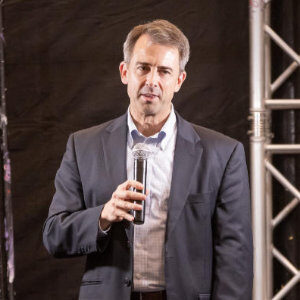Doing Great Things While Practicing Virtue
At the Authentic Leadership Foundation, we’ve discovered in schools, like other organizational settings, that the most successful leaders are those with traction. Traction means executing well and delivering visible results. True success is about building mature team members and a mature organization within years, not decades. Maturity is when the organization operates independent of the leader at least 50 percent of the time.
Mature leadership understands, often intuitively or through experience, that to demand maturity (more) from team members and build traction, they must provide:
- Growth Opportunities: Enabling personal growth through principled decision-making to meet rising expectations. This encompasses HIRING, TRAINING, and ACCOUNTABILITY (HTA) for MISSION™, which paves the way for effective use of…
- Focused Processes: Establishing focus and accountability through TEAM COMMUNICATION IMPROVEMENT for MISSION™.
The Bright Side: Traction Towards Magnanimity
The great news is that everyone can learn how to provide personal growth and team communication improvement to execute well, including our youth. We call this journey TRACTION TOWARDS MAGNANIMITY.
The Challenge: Overcoming Common Practice
Unfortunately, in practice, leaders often spend 80 percent of their time firefighting instead of focusing on four key activities: growing team members, communication, strategy, and business development. This leaves only 20 percent, which is almost always spent on the latter two activities.
Additionally, many consultants charge exorbitant fees for strategic planning and development sessions, often providing theoretically sound advice but falling short on teaching how to build the necessary traction to bring plans to life. We have many stories of learning this the hard way.
Real-World Experience and Lessons Learned
In 2007, I was part of a team that introduced Integrated Project Delivery (IPD) to revolutionize construction project delivery. Although promising, it did not meet expectations. Similarly, in 2017, I led a team from the largest healthcare systems in Houston, Texas, to improve healthcare construction. Despite creating The Workbook for Change, this initiative, like the first one, did not achieve its full potential. Something was missing.
What was missing? The truth was like a giant elephant in the room staring me right in the face: Personal growth and improved team communication. Without this foundation, potential is never realized.
Think about it. While some leaders know how to build successful organizations, many still lack the principles and ability to communicate needed for traction towards magnanimity. Many case studies show that a lack of these qualities has negatively impacted schools, companies, churches, and governments. Imagine if Steve Jobs (not well remembered for his magnanimity) had this traction – Apple’s journey might have been even more remarkable.
On the other hand, Herb Kelleher of Southwest Airlines exemplified a contrasting approach. His magnanimous leadership created a family-like atmosphere at Southwest, proving that personal growth and team communication can be powerful drivers of sustained success.
Embracing Hope and Responsibility
Now that we know how to build traction towards magnanimity, we cannot ignore this knowledge. We have a responsibility to be our best in our one, short life. It’s not necessarily about making our organizations bigger, but better, by doing great things and practicing virtue.
Are you ready to take the first step? If so, know thyself, by learning about temperament here (or at the link below). Or even better, if I have piqued your interest, I invite you to schedule a call with me here, or simply reach out to me directly at (214) 535-9333.
Image Credit: leigh banks from Pixabay




